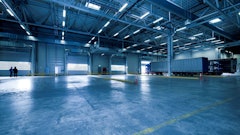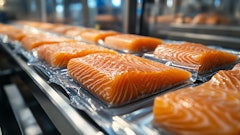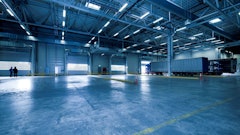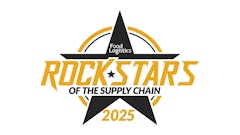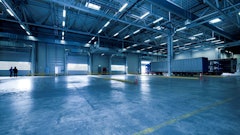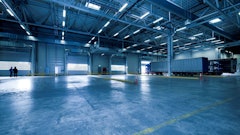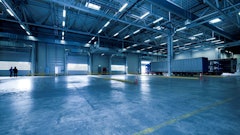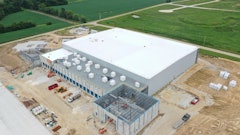
Site selection requires a good deal of consideration, and often the factors within the equation can be at odds with another. For the food and beverage industry, choosing a location for a distribution center starts with aiming to be as close as possible to highly populated markets. Other requirements include proximity to a good transportation infrastructure, moderate operational costs, an available and dependable labor force and moderate taxes—and all of these requirements must conform to a particular distribution budget.
Although the task might appear daunting, our experts assure us it can be accomplished successfully. We asked a couple of site selection consultants for some of the “hot” locations currently favorable to these kinds of projects, and these are the geographies they highlighted.
LOS ANGELES BASIN
A number of factors make California a difficult place to do business, so companies might have to weigh the advantages against the disadvantages. LA’s hot-ticket geography offers a huge source of food supplies, as well as huge market concentrations, but the area’s strict regulatory climate, restrictive labor laws, higher operating costs and higher electricity costs offer substantial obstacles to businesses.
“The LA Basin market is such that if you are going to serve it, you have to be right there,” says David Brandon, senior vice president for industrial site selection for Dallas-based Site Selection Group. “If you can serve it from the high desert, you will be better off in terms of overall operating costs than if you were to serve it from locations in the valley.”
Consequently, companies are looking beyond the LA Basin to escape the regulatory requirements by agencies like OSHA and the South Coast Air Management District. “Once you get into the high desert, you are no longer within the air management district and the requirements for solid and liquid waste disposal and material management issues are not as aggressive,” explains Brandon.
He points to a recent Dr. Pepper/Snapple DC in Victorville and a Pepsico facility in Tracy both in the high desert. One caveat Brandon offers is California’s suspect financial condition. “The money will have to come from somewhere and this is an issue that will come to bear on future decisions relating to DC location.”
“Companies would love to be able to cross into Arizona or Nevada,” says Mark Sweeney, senior principal at McCallum Sweeney Consulting in Greenville, SC. “But California still seems to be a place that companies will accept, even with its difficulties, just to be able to take advantage of California’s other advantages such as its excellent transportation infrastructure, including its two major ports in LA and Long Beach.”
CHICAGOLAND
Sweeney explains the “Chicagoland” area encompasses Chicago and the surrounding 100 miles or so, including Illinois and parts of Wisconsin and Iowa.
The “hot” area is Joliet, about 30 miles southeast of Chicago, which again demonstrates how these areas are chosen based on their proximity to the higher-cost epicenters companies want to be near.
Chicago’s attraction is it can serve all of Michigan and the Midwest, notes Brandon. “So it is a major area of distribution and logistics center investments. One of the challenges we face is getting our customers to within a 100- or 200-mile radius of the epicenter of their distribution network they have identified when they approach us. You don’t have to be in Chicago to serve that market.”
Locating within that radius enables companies to operate in an environment that not only enhances their distribution network, but also diminishes their overall operating costs, explains Brandon. He points to Bay Valley Foods which recently located in Rochelle, IL, about 80 miles west of Chicago. Living Essentials and Monarch Beverage Co. both recently built DCs in northern Indiana, just across the Chicago line. Weston Foods just built a major DC and bakery in northern Indiana. “The reason these companies chose northern Indiana is because taxes, labor availability, and costs are higher across the border into Illinois,” Brandon reports.
About four years ago, Site Selection Group worked on DC projects for both Hershey’s and Nestle which both chose sites in western Illinois. “In both instances, this was intended to distribute products to be within reach of and serve St. Louis and Chicago markets,” Brandon says.
HOUSTON AND ENVIRONS
Brandon reports that Houston has been a significant and growing force in the food distribution arena.
“Texas as a whole has done very well, from the Rio Grande Valley to the tip of the Panhandle north of Amarillo,” he says.
He points to the heavy population concentration—within reach of San Antonio, Dallas and Fort Worth—and a superb transportation infrastructure, including a good highway system and robust port activity.
Three recent DCs in this area include American Rice in Freeport (southeast of Houston), Glazier Foods Group right in Houston, and U.S. Foodservice in Buda, west of Houston.
OUTER ATLANTA REGION
The Atlanta region’s location offers appeal, particularly Macon which is about 80 miles southeast of Atlanta. “The strategic appeal to Macon, where there is a new Sara Lee DC, is it is close to the biggest population centers in the South, serving markets in Atlanta, Charlotte, and Birmingham,” says Sweeney.
The region offers excellent road, rail and air transportation. “You also have two of the better ports on the East Coast with Savannah and Charleston ports,” he continues. “Highway 16 was built primarily to connect Savannah to Atlanta, so there is easy access directly to the port from wherever around Atlanta you might locate your facility.”
Sweeney adds that this location offers non-union workforces and dependable labor availability. Recently Coca-Cola Enterprise built two DCs here and Brandon notes a variety of new 3PLs also located here.
THE GREATER LEHIGH VALLEY, PA
One of the attractions of the Allentown-Bethlehem-Easton region of the Keystone State is its proximity to large population centers, including the New York City metropolis and the Boston-to-Washington, DC megalopolis, reports Sweeney.
“Companies can expect less operating expenses here over New York City or northern New Jersey. It also has a well-developed infrastructure with good highways, rail, water, and air transport.” Tootsie Roll Industries just announced it will build a DC here. The non-union workforce here makes the region an attractive choice, says Sweeney.
HUDSON VALLEY, NY
Another area with great appeal for the Washington-to-Boston region is the Hudson Valley and north or west toward Binghamton, offering attractive labor and real estate costs, reports Brandon.
“This region serves the Northeast and Mid-Atlantic states, extending from the Pennsylvania-Maryland border north into New England,” says Brandon. “We see this region as the principal growth area in food distribution for the Northeast—in towns like Mamaroneck, Mechanicsville, Monroe and Coxsackie.”
Recent activity in this region includes new DCs for Price Chopper, DeCrescente (in Mechanicsville), and Empire Merchants in Coxsackie.
RISING STARS
The following areas are quickly becoming bustling locations for DCs.
Northern Ohio: Northern Ohio has shown a strong propensity to growth food distribution businesses there, reports Brandon. Woeber Mustard built and expanded a major DC in Springfield recently, and Reinhart Food Service recently built a DC in Lockland.
Louisville, KY: “Louisville finds itself going head-to-head with Indianapolis today—so it’s not Memphis anymore and the decisions that are made are either Indianapolis or Louisville, with Louisville in the lead,” reports Brandon. Site Selection Group recently worked in “very capital-intense operations” involving refrigeration and freezing for Kraft and for Gordon Foods—with its state-of-the-art freezer warehouse.
Louisville’s excellent transportation infrastructure and Kentucky’s attractive tax profile contribute to the city’s appeal, Brandon explains. “This region has a dense distribution sector and much of that is food-related, supported by aggressive developers and 3PL operators.”
Jacksonville, FL: Jacksonville’s appeal is its active port, which created an environment where 3PLs have blossomed in the foodservice and other industries, he continues. The intersection of Interstate 10 and I-95 also contributes to its allure. Recent new DCs include Dr. Pepper Snapple Group and Quaker Oats.
Years ago, neither Louisville nor Jacksonville would have been considered major outlets for distribution activity—let alone major food distribution activity, notes Brandon. “Clearly, they are players and I suspect both will become major centers because of their geographic positions, their transportation infrastructures and their current cost profiles are very attractive to growing food distribution companies.”




